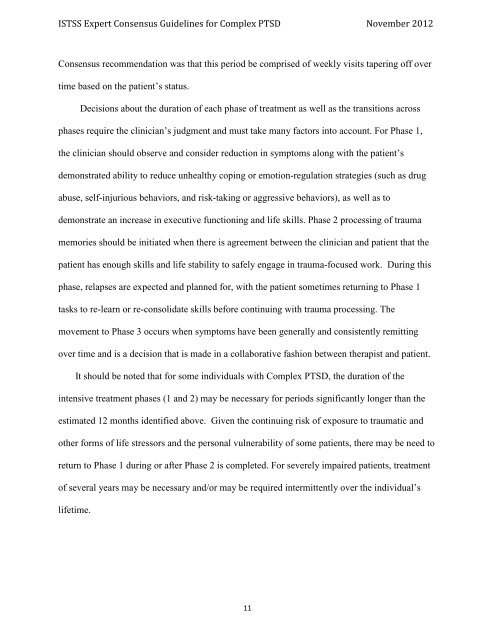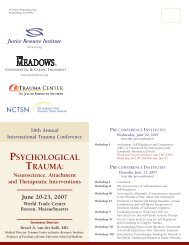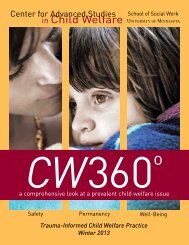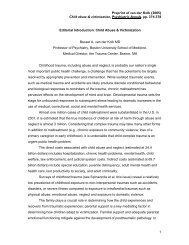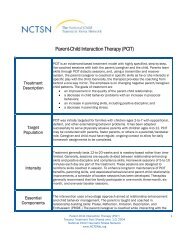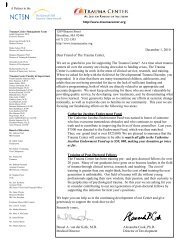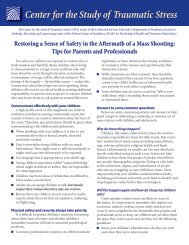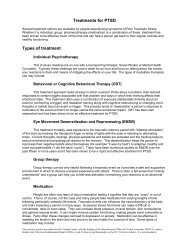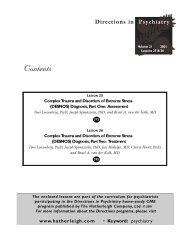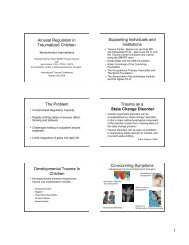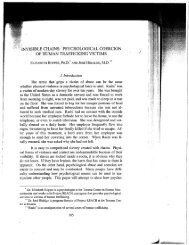ISTSS Expert Consensus Treatment Guidelines for Complex PTSD
ISTSS Expert Consensus Treatment Guidelines for Complex PTSD
ISTSS Expert Consensus Treatment Guidelines for Complex PTSD
Create successful ePaper yourself
Turn your PDF publications into a flip-book with our unique Google optimized e-Paper software.
<strong>ISTSS</strong> <strong>Expert</strong> <strong>Consensus</strong> <strong>Guidelines</strong> <strong>for</strong> <strong>Complex</strong> <strong>PTSD</strong> November 2012<br />
<strong>Consensus</strong> recommendation was that this period be comprised of weekly visits tapering off over<br />
time based on the patient’s status.<br />
Decisions about the duration of each phase of treatment as well as the transitions across<br />
phases require the clinician’s judgment and must take many factors into account. For Phase 1,<br />
the clinician should observe and consider reduction in symptoms along with the patient’s<br />
demonstrated ability to reduce unhealthy coping or emotion-regulation strategies (such as drug<br />
abuse, self-injurious behaviors, and risk-taking or aggressive behaviors), as well as to<br />
demonstrate an increase in executive functioning and life skills. Phase 2 processing of trauma<br />
memories should be initiated when there is agreement between the clinician and patient that the<br />
patient has enough skills and life stability to safely engage in trauma-focused work. During this<br />
phase, relapses are expected and planned <strong>for</strong>, with the patient sometimes returning to Phase 1<br />
tasks to re-learn or re-consolidate skills be<strong>for</strong>e continuing with trauma processing. The<br />
movement to Phase 3 occurs when symptoms have been generally and consistently remitting<br />
over time and is a decision that is made in a collaborative fashion between therapist and patient.<br />
It should be noted that <strong>for</strong> some individuals with <strong>Complex</strong> <strong>PTSD</strong>, the duration of the<br />
intensive treatment phases (1 and 2) may be necessary <strong>for</strong> periods significantly longer than the<br />
estimated 12 months identified above. Given the continuing risk of exposure to traumatic and<br />
other <strong>for</strong>ms of life stressors and the personal vulnerability of some patients, there may be need to<br />
return to Phase 1 during or after Phase 2 is completed. For severely impaired patients, treatment<br />
of several years may be necessary and/or may be required intermittently over the individual’s<br />
lifetime.<br />
11


